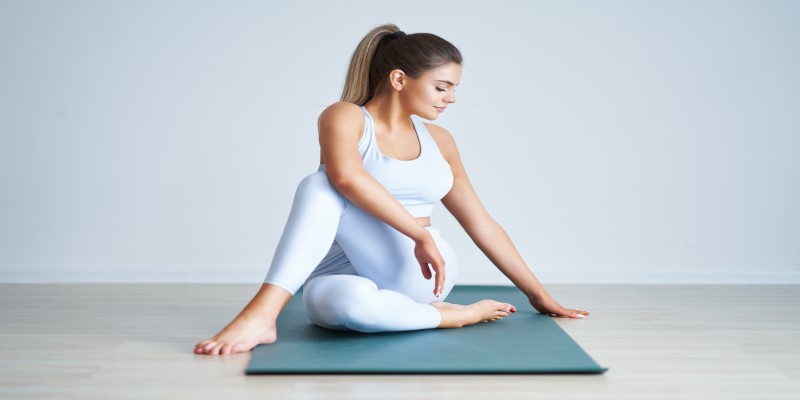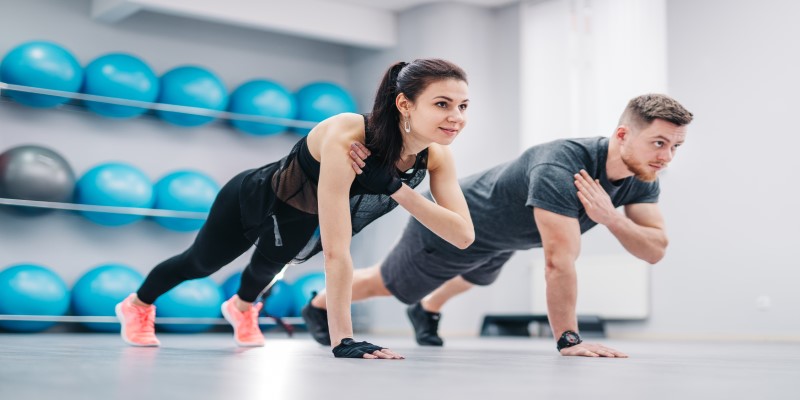Pilates Uncovered: Debunking 5 Biggest Myths for Clarity
Feb 13, 2024 By Nancy Miller
Embarking on a Pilates journey unlocks a world of versatility and effectiveness in exercise. Centered on core strength, flexibility, and heightened body awareness, Pilates intertwines controlled movements and mindful breathing to nurture physical and mental well-being.
Whether a novice or seasoned practitioner, Pilates accommodates all, offering a spectrum of exercises adaptable to diverse fitness aspirations. As you delve into the realm of Pilates, discover how its inclusive approach fosters holistic health and fitness, empowering individuals of all ages and abilities to thrive physically and mentally. So, without any further ado, let’s begin exploring!
What to Know About Pilates?
Pilates is a versatile and effective exercise method that focuses on strengthening the core, improving flexibility, and enhancing overall body awareness. It emphasizes controlled movements, proper alignment, and mindful breathing to promote physical and mental well-being.
Pilates offers a range of exercises that can be modified to suit your fitness level and goals. From mat-based workouts to equipment-based sessions using reformers and chairs, there are endless possibilities to explore within the world of Pilates. With consistent practice, Pilates can help you build strength, increase flexibility, and improve posture, leading to better overall health and fitness.

A Glimpse into the Pilates' Impact on Mental Well-being
Beyond its physical benefits, Pilates profoundly influences mental well-being. While the focus often lies on strengthening the body, Pilates also nurtures the mind through its mindful approach to movement.
Mindful Movement and Concentration
Pilates encourages practitioners to engage in mindful movement, fostering a deep connection between the body and mind. Each exercise requires concentration and focus, promoting mental clarity and presence during practice.
Stress Reduction and Relaxation
Pilates' deliberate, controlled movements can alleviate stress and tension accumulated throughout the day. By focusing on breath control and precise movements, practitioners cultivate a sense of calmness and relaxation, promoting mental rejuvenation and stress relief.
Enhanced Body Awareness and Mindfulness
Through Pilates, individuals develop heightened body awareness, recognizing subtle shifts in movement and alignment. This increased awareness extends beyond the studio, encouraging mindfulness in everyday activities and promoting a deeper connection to one's body.
Emotional Resilience and Empowerment
Regular Pilates practice fosters emotional resilience and empowerment. As individuals overcome physical challenges and push past perceived limitations, they cultivate a sense of confidence and self-assurance that transcends the confines of the studio.

5 Biggest Myths About Pilates for Better Understanding
By now you have explored the key basics of Pilates, let’s now dive deeper into the debunking of the five biggest myths about Pilates.
Myth 1: Pilates is Only for Women
One of the most prevalent misconceptions about Pilates is that it's exclusively for women. However, Pilates was created by Joseph Pilates, a man, and was initially practiced by both men and women.
Pilates offers a full-body workout that focuses on strength, flexibility, and coordination, making it beneficial for people of all genders. Regardless of gender, anyone can enjoy and benefit from Pilates, as it helps improve posture, build lean muscle, and enhance overall body awareness.
Myth 2: Pilates is Easy
Some people believe Pilates is easy and doesn't pose a significant challenge. In reality, Pilates can be as challenging as you make it. Pilates exercises can be modified to suit different fitness levels, from beginners to advanced practitioners.
Pilates focuses on engaging the core muscles while promoting stability and control throughout the body, which requires concentration and effort. It's not just about physical strength but also mental focus and mindfulness, making it a holistic form of exercise.
Myth 3: Pilates is Just Another Form of Yoga
While Pilates and yoga have similarities, like focusing on breath control and mindful movement, they are different exercises with different origins and principles. Pilates emphasizes core strength, muscular endurance, and proper alignment, while yoga focuses more on flexibility, balance, and spirituality.
While both can complement each other, Pilates offers unique benefits specific to its principles and exercises. Pilates sessions often incorporate specialized equipment like reformers and chairs, which are not typically used in yoga practice.
Myth 4: Pilates is Expensive
Another common myth about Pilates is that it's only accessible to those who can afford expensive equipment or classes. While Pilates classes and equipment can be costly, affordable options include mat Pilates classes and online resources.
Additionally, many community centers and gyms offer Pilates classes at a reasonable price, making it more accessible to a wider range. Pilates can also be practiced without equipment, using only bodyweight exercises, making it a budget-friendly option for those who want to reap its benefits without breaking the bank.
Myth 5: Pilates is Only for Young, Fit People
Some believe Pilates is only suitable for young, fit individuals with a certain level of flexibility and strength. However, Pilates can be adapted to accommodate people of all ages and fitness levels. Whether you're recovering from an injury, managing a chronic condition, or simply looking to improve your overall fitness, Pilates can be tailored to meet your specific needs and abilities.
Many older adults find Pilates to be an excellent form of exercise for maintaining mobility, improving balance, and preventing falls. With its low-impact nature and emphasis on proper form, Pilates is accessible to everyone, regardless of age or fitness level.
Wrapping It Up!
Debunking the myths surrounding Pilates reveals its essence as a versatile and accessible exercise method. Pilates transcends stereotypes, welcoming individuals of all ages, genders, and fitness levels to experience its transformative benefits. By embracing Pilates, practitioners cultivate physical strength, flexibility, mental focus, and mindfulness.
As you continue your Pilates journey, remember that its alignment, control, and precision principles extend far beyond the studio, enriching your overall health and well-being. So, let go of misconceptions, embrace the truth, and embark on a healthier, more vibrant life through Pilates. Hope this info was worth reading.







